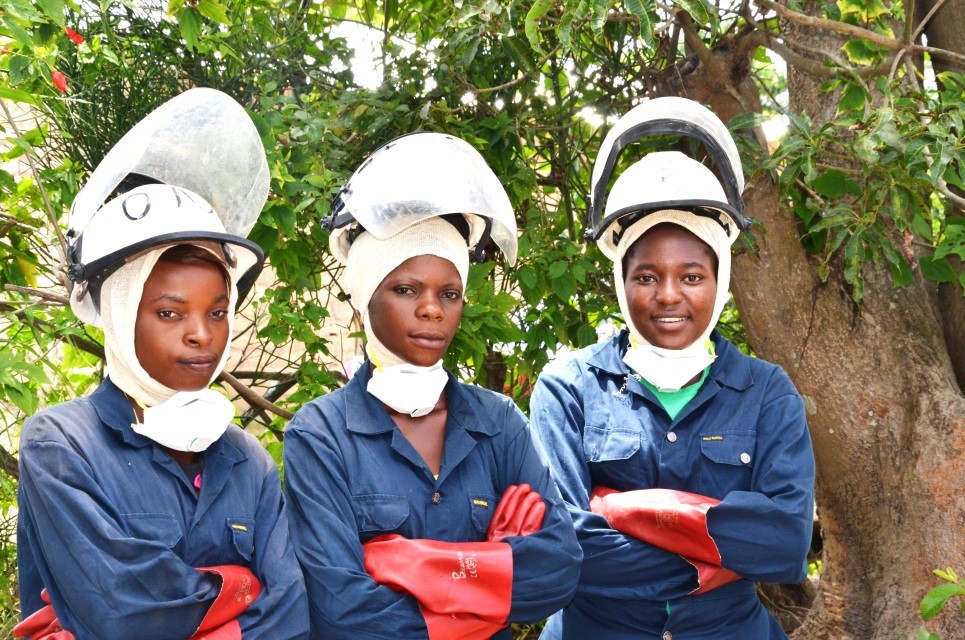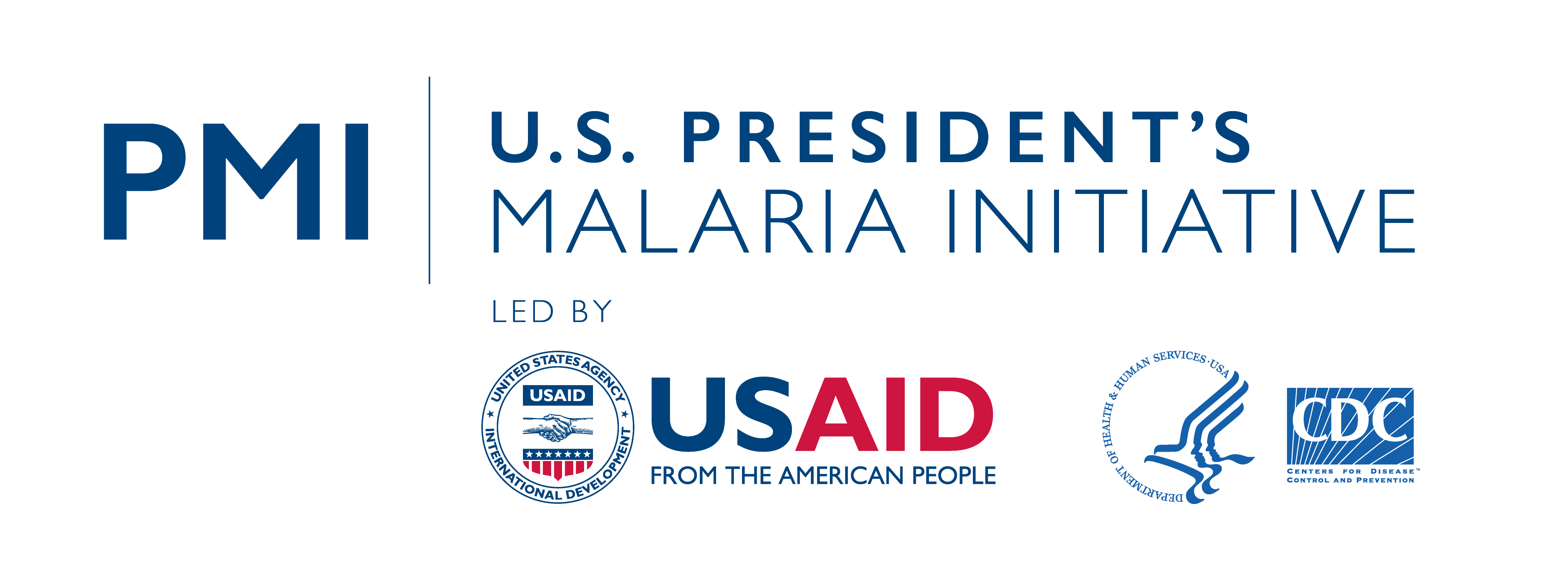 *This country is now operating under the U.S. President’s Malaria Initiative Evolving Vector Control to Fight Malaria Project
*This country is now operating under the U.S. President’s Malaria Initiative Evolving Vector Control to Fight Malaria Project
IRS is one of the key malaria control strategies of the Ministry of Health (MOH)’s Zambian National Malaria Elimination Program (NMEP), which provides technical guidance, leadership, and coordination of malaria control and prevention activities in Zambia.
In 2017, the government officially launched the National Malaria Elimination Strategic Plan 2017–2021, which aims to transition Zambia from malaria control to malaria elimination. In the same year, the U.S. President’s Malari Initiative (PMI) continued IRS in the same 36 high-burden districts across Eastern, Luapula, Muchinga, and Northern Provinces and sprayed 634,410 structures out of 676,188 structures found. In 2018, PMI VectorLink, together with Zambia’s National Malaria Elimination Program (NMEP), supported IRS in Northern, Luapula and Muchinga Provinces and three pre-elimination districts (Chadiza, Katete, and Sinda) in Eastern Province. In 2018, PMI VectorLink sprayed 579,490 structures out of 644,677 structures found. In 2019, VectorLink conducted IRS in 20 districts, targeting 597,625 structures from October 2 to November 30, 2019. A total of 536,983 structures were sprayed out of 598,732 structures found by spray operators (SOPs) in the targeted districts, accounting for a coverage rate of 90%. From September 29-November 18, 2020, PMI VectorLink supported IRS in 15 districts across Eastern (all nine districts), Copperbelt (the three rural districts), and Luapula (three districts) Provinces, targeting 639,536 structures which was later adjusted to 629,255 structures (after removing ineligible structures in Nchelenge). VectorLink sprayed 648,914 structures out of 672,581 structures found, resulting in a spray coverage of 97%.
In 2021, VectorLink targeted 699,591 structures for IRS in 21 districts—all 14 districts in Eastern Province, four rural districts in Copperbelt (Kalulushi, Lufwanyama, Masaiti, and Mpongwe) and three districts in Luapula Province (Chienge, Kawambwa, and Nchelenge). The 2021 target was later adjusted to 706,298, due to an increase in the targets for Kalulushi and Lundazi districts. The team sprayed 717,351 structures out of 738,659 structures found across the 21 districts, resulting in a coverage of 97%.
In year five (April 2022 – March 2023), the PMI VectorLink Zambia project will support the NMEP as it prepares to shift to ITNs as the primary vector control strategy in 2023. This entails universal ITN coverage during the 2023 mass campaign, with targeted IRS in select districts/hotspots. According to April 2022 NMEC communications with potential campaign supporters, Zambia aims to continue a robust IRS program, but under the new NMESP, the footprint for IRS will be greatly reduced.
To support this transition, VectorLink will work with the NMEP to define future IRS targeting criteria and will help strengthen routine ITN distribution channels and entomological monitoring capacity to ensure any rebounds in malaria incidence at the district level are detected. The project will also support the NMEP to plan for the 2023 mass campaign, which is envisaged to be a universal campaign.
VectorLink will work with the NMEP, provinces, and districts to spray 590,204 targeted structures in 18 districts using clothianidin-based insecticides. The project’s objective is to implement high-quality and safe IRS operations attaining a minimum coverage of 85 percent of the targeted structures found in each targeted community in the 18 districts. The project will also pilot two insecticide products manufactured by Tagros (a clothianidin-only and a clothianidin-deltamethrin formulation) in one district each. Both products were pre-qualified by WHO in late 2021. The project will conduct the following activities:
- Conduct IRS in 18 districts (all 14 districts of Eastern Province, three rural Copperbelt districts (Lufwanyama, Mpongwe, and Masaiti) and Nchelenge district in Luapula Province), targeting 590,204 structures. Due to resource constraints, select Health Facility Catchment Area (HFCAs) reporting greater than 90% ITN coverage as of February 2022 have been excluded.
- Provide technical assistance to the NMEP to supervise IRS in the VectorLink supported districts, host statutory IRS meetings [Vector Control Technical Working Group (VCTWG), Technical Advisory Committee (TAC), national IRS planning meetings], and print a glossary of IRS terminologies/indicators to ensure that all IRS implementers use the same terms.
- Conduct entomological monitoring activities in four surveillance districts (Lufwanyama, Mambwe, Katete, Nchelenge) to assess the impact of IRS operations on standard PMI entomological indicators. In Year 5, VectorLink will be unable to fund a full package of entomology activities in three Government of the Republic of Zambia (GRZ) districts—Serenje, Chililabombwe, Milenge. Longitudinal surveillance at these sites will transition to GRZ, while VectorLink will continue to conduct only insecticide resistance testing.
- Conduct a feasibility assessment of targeted LSM in two towns in each of the pre-elimination districts of Katete and Chipata in Eastern Province.
- Maintain the satellite offices in Chipata and Ndola to decentralize IRS planning activities and provide direct TA to Eastern and Copperbelt Provinces. The Nchelenge provincial office and warehouse facilities will close given the reduction from three districts to one (Nchelenge) in 2022.
- Support the NMEP as it prepares to shift from IRS to ITNs as the main vector control intervention in 2023, leveraging mapping and data visualization expertise from key partners (PATH, Akros) to support integrated, data-driven decision making on targeting of IRS. VectorLink TA in this regard will be informed by WHO and PMI guidelines. Current guidance is that optimal targeting of IRS or ITNs is based on at least these seven factors: 1) insecticide resistance – resistance to ITN insecticide and IRS insecticides, 2) mosquito behavior – biting and resting behavior; 3) human behavior – ITN use and indoor resting behavior; 4) deployment logistics – ITN vs IRS coverage; 5) ITN and IRS durability – ITN durability vs. IRS residual efficacy, 6) impact of vector population; and 7) impact on epidemiology.
- Provide technical assistance to the NMEP in the planning and preparation of the 2023 mass ITN campaign, including support to enable the NMEP to absorb proposed ITNs from Against Malaria Foundation (AMF) and disseminating key findings and recommendations from the recently-completed ITN misuse assessment to support the social behavior change (SBC) strategy for the mass campaign.
- Implement the 24-month round of ongoing standard durability monitoring study of PBO ITNs distributed in Serenje in November/December 2021 and Nyimba in January 2021.
- In collaboration with the NMEP and the entomological data committee, facilitate the incorporation of entomology modules based on the standard VectorLink Collect entomological modules into the NMEP Malaria Rapid Reporting (MRR) District Health Information Software Version 2 (DHIS2).

